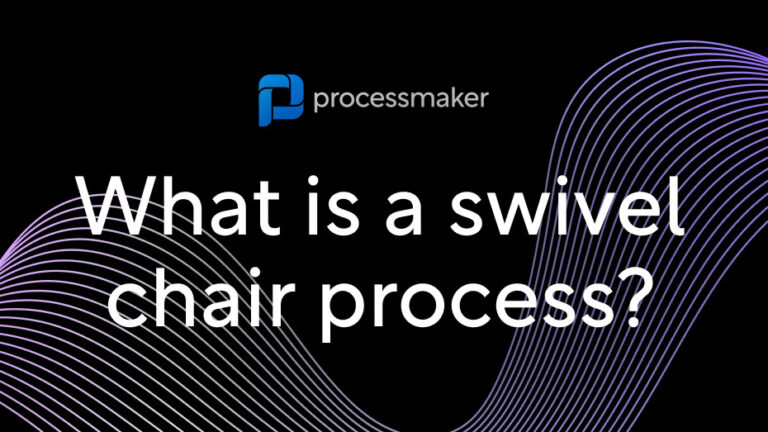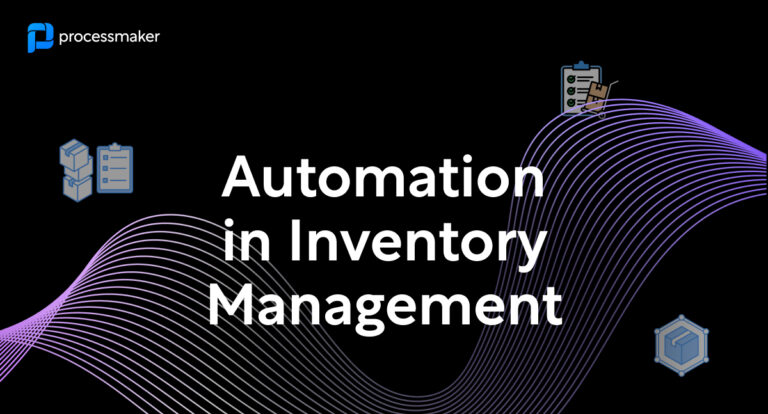Swivel chairs are popular in many offices, workplaces, and rooms in the home. A swivel chair is a spinny, revolving chair. It’s also a way to describe inefficient processes and opportunities for automation in business process management. In this brief article, we go through what a swivel chair is in the context of a business.
What is a swivel chair in business operations?
A swivel chair process describes any business workflow or task where you need to manually enter the same data into different systems. This term can also relate to various types of chairs, including swivel chairs, stationary chairs, and accent chairs, which are often used in office settings. Eliminating swivel chair activity from your business processes reduces manual work, creates efficiencies, improves operational excellence, and allows employees to rest more.
The swivel chair metaphor comes from the office setting, where you could imagine physically turning from one activity to another in your swivel chair as you repeat manual tasks. Recent research by ProcessMaker estimates that 10% of the time of an average business operations team is spent in swivel chair activities.
Reasons for swivel chair
Swivel chair processes are fairly common in the workplace but may be difficult to measure. These processes often require extra space for manual data entry and task management. Typically they involve legacy workflows or enterprise IT systems that require a high amount of manual data entry or tasks. Swivel chair processes can be as versatile as lounging in a comfortable chair, allowing for easy movement between tasks.
Often swivel chair activities form over time when people implement more activities into a workflow or assignment. It may be common practice in areas like financial reporting or customer service where you need to toggle between different types of business applications to complete repetitive tasks. For example, in many shared services functions maintaining customer records between various ERP and CRM systems may require manual copy-paste when integrations have not been built between different systems.
Why you should remove the swivel chair as a comfortable seating option from your processes
- Eliminate human error – typically swivel chair activities involve manual copy-paste work where it’s not uncommon to have human error.
- Speed up lead time – swivel chair activity may slow down your processes or workflows if you are dependent on manual intervention from an employee.
- Reduce operational cost – while it may be difficult to measure, the cost of manual, repetitive work in swivel chair activities can quickly add up.
- Facilitate process re-engineering – swivel chair activities are typically good points to improve operational excellence through a broader re-design of inefficient processes. Just like choosing the right fabric for a chair can enhance its durability and appearance, optimizing processes can enhance efficiency and reduce errors.
- Enhance relaxation – automating swivel chair processes can lead to a more relaxed and efficient work environment, reducing stress and increasing comfort.
Swivel chair with swivel base in automation / RPA
Swivel chair activities in business operations are often high-potential areas for robotic process automation. Just as leather options provide customization and personalization for chairs, RPA offers tailored solutions for automating business processes. Just as recliners offer unparalleled comfort and relaxation, automated processes provide ease and efficiency in handling tasks. The core use case is that repetitive, manual tasks that involve digital systems can be automated, either through direct integrations between different business applications – or through RPA bots that complete digital tasks more efficiently and accurately than humans.
How to discover and remove swivel chair activity
For many companies, exercises highlight swivel chair processes. Just as upholstered chairs require regular care and maintenance, business processes need continuous monitoring and improvement. Using process intelligence software adds a modern and sophisticated style to business operations. Increasingly, competitive enterprises are opting for automated process intelligence software that continuously identifies inefficient processes and wasted work across different tasks, processes, and enterprise software.





